The Sri Lankan Spice Industry Case Study
VerifiedAdded on 2023/01/16
|14
|654
|48
Presentation
AI Summary
This presentation analyzes the spice industry in Sri Lanka, including the cinnamon and tea industry, manufacturing, farmers, and supply chain. It also provides recommendations for digital innovations in the industry.
Contribute Materials
Your contribution can guide someone’s learning journey. Share your
documents today.
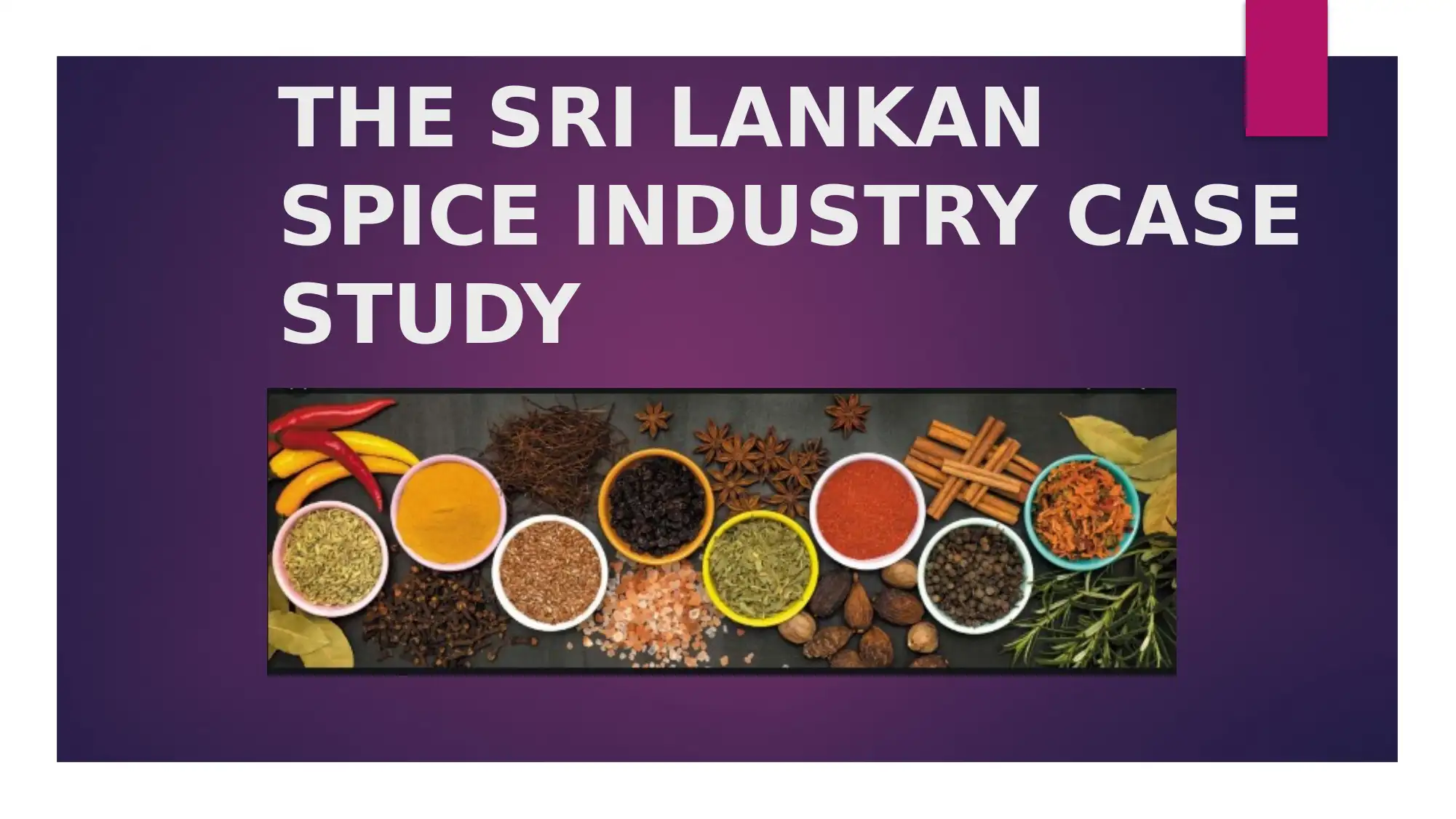
THE SRI LANKAN
SPICE INDUSTRY CASE
STUDY
SPICE INDUSTRY CASE
STUDY
Secure Best Marks with AI Grader
Need help grading? Try our AI Grader for instant feedback on your assignments.
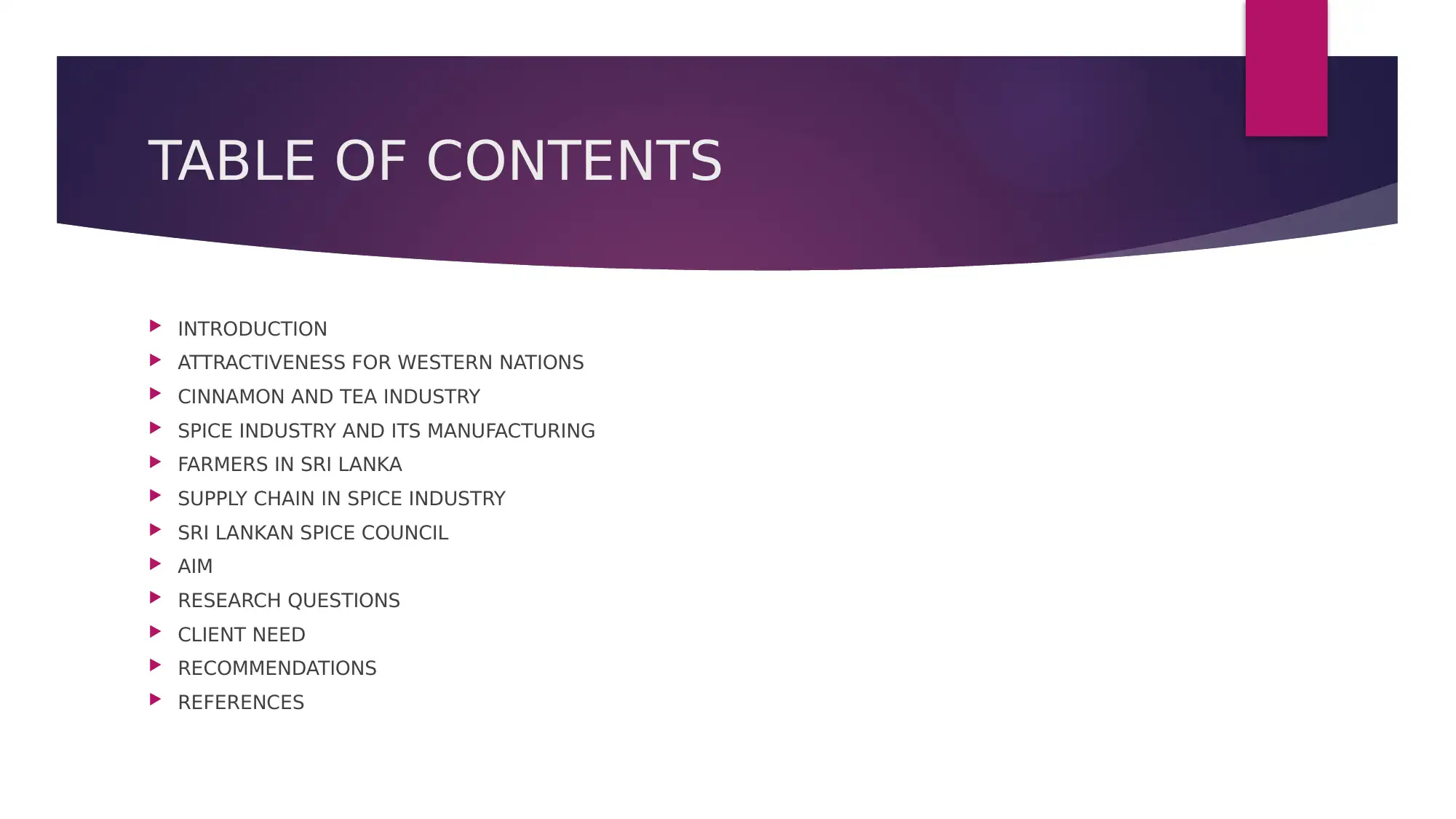
TABLE OF CONTENTS
INTRODUCTION
ATTRACTIVENESS FOR WESTERN NATIONS
CINNAMON AND TEA INDUSTRY
SPICE INDUSTRY AND ITS MANUFACTURING
FARMERS IN SRI LANKA
SUPPLY CHAIN IN SPICE INDUSTRY
SRI LANKAN SPICE COUNCIL
AIM
RESEARCH QUESTIONS
CLIENT NEED
RECOMMENDATIONS
REFERENCES
INTRODUCTION
ATTRACTIVENESS FOR WESTERN NATIONS
CINNAMON AND TEA INDUSTRY
SPICE INDUSTRY AND ITS MANUFACTURING
FARMERS IN SRI LANKA
SUPPLY CHAIN IN SPICE INDUSTRY
SRI LANKAN SPICE COUNCIL
AIM
RESEARCH QUESTIONS
CLIENT NEED
RECOMMENDATIONS
REFERENCES
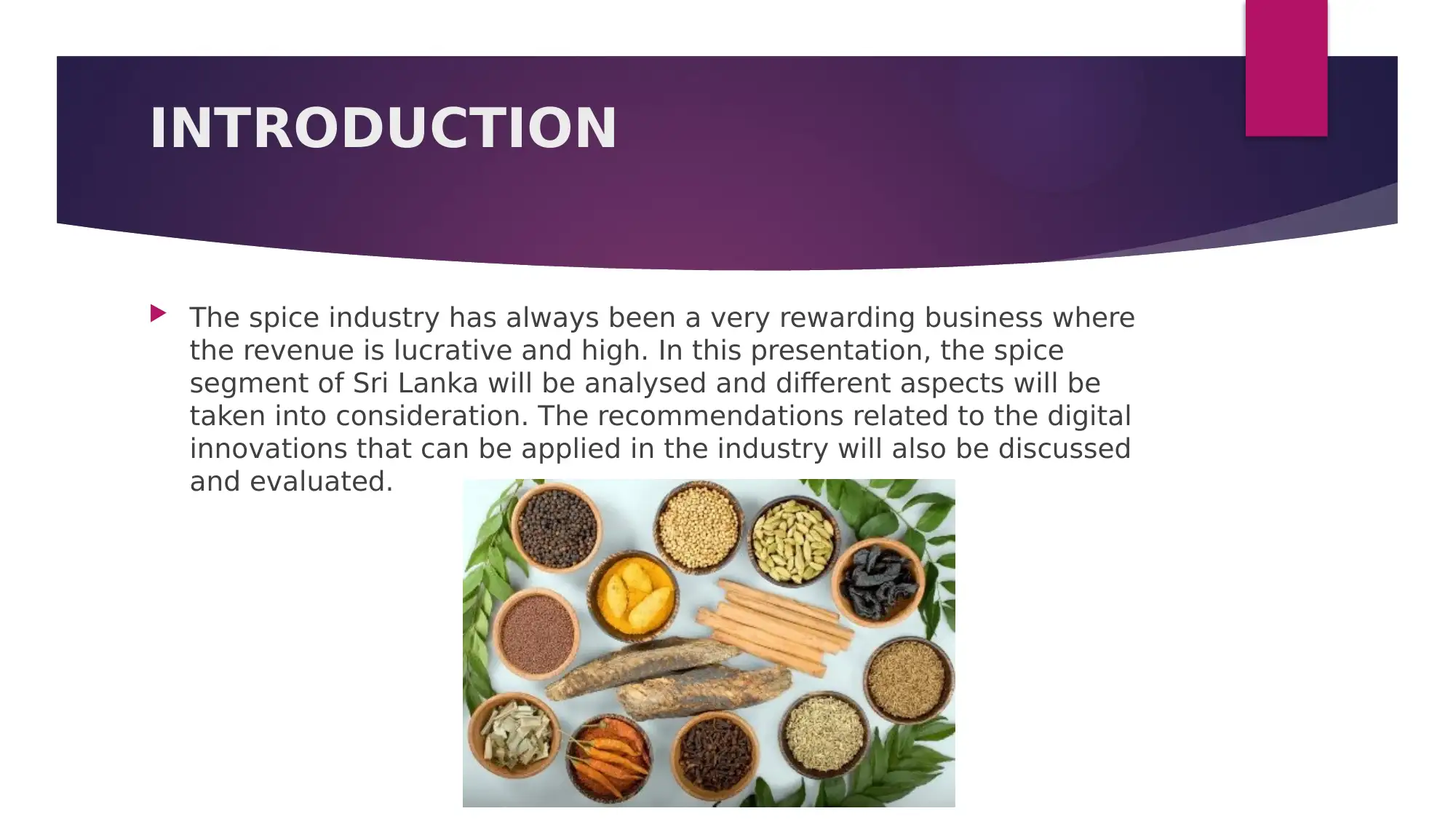
INTRODUCTION
The spice industry has always been a very rewarding business where
the revenue is lucrative and high. In this presentation, the spice
segment of Sri Lanka will be analysed and different aspects will be
taken into consideration. The recommendations related to the digital
innovations that can be applied in the industry will also be discussed
and evaluated.
The spice industry has always been a very rewarding business where
the revenue is lucrative and high. In this presentation, the spice
segment of Sri Lanka will be analysed and different aspects will be
taken into consideration. The recommendations related to the digital
innovations that can be applied in the industry will also be discussed
and evaluated.
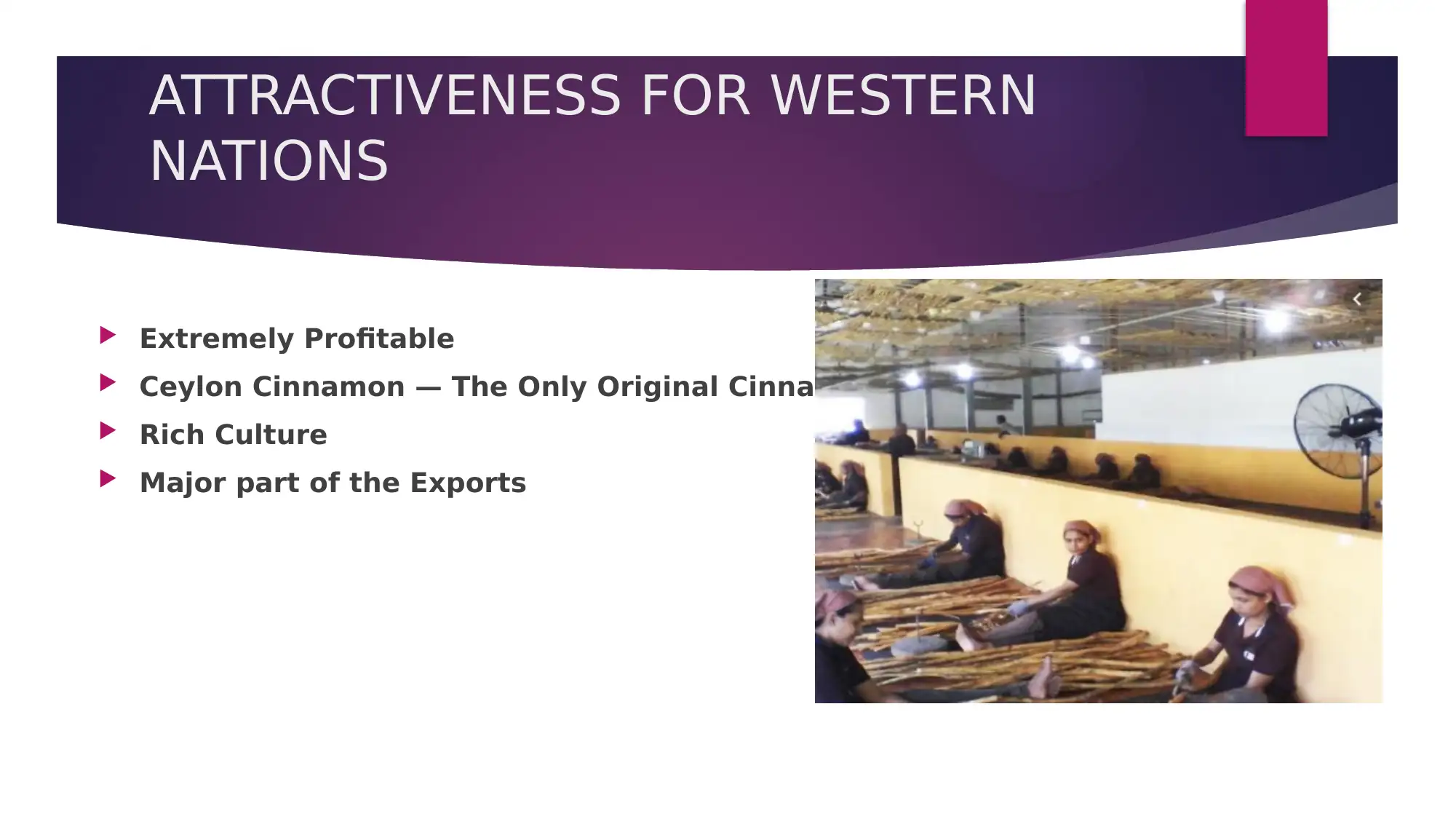
ATTRACTIVENESS FOR WESTERN
NATIONS
Extremely Profitable
Ceylon Cinnamon — The Only Original Cinnamon
Rich Culture
Major part of the Exports
NATIONS
Extremely Profitable
Ceylon Cinnamon — The Only Original Cinnamon
Rich Culture
Major part of the Exports
Secure Best Marks with AI Grader
Need help grading? Try our AI Grader for instant feedback on your assignments.
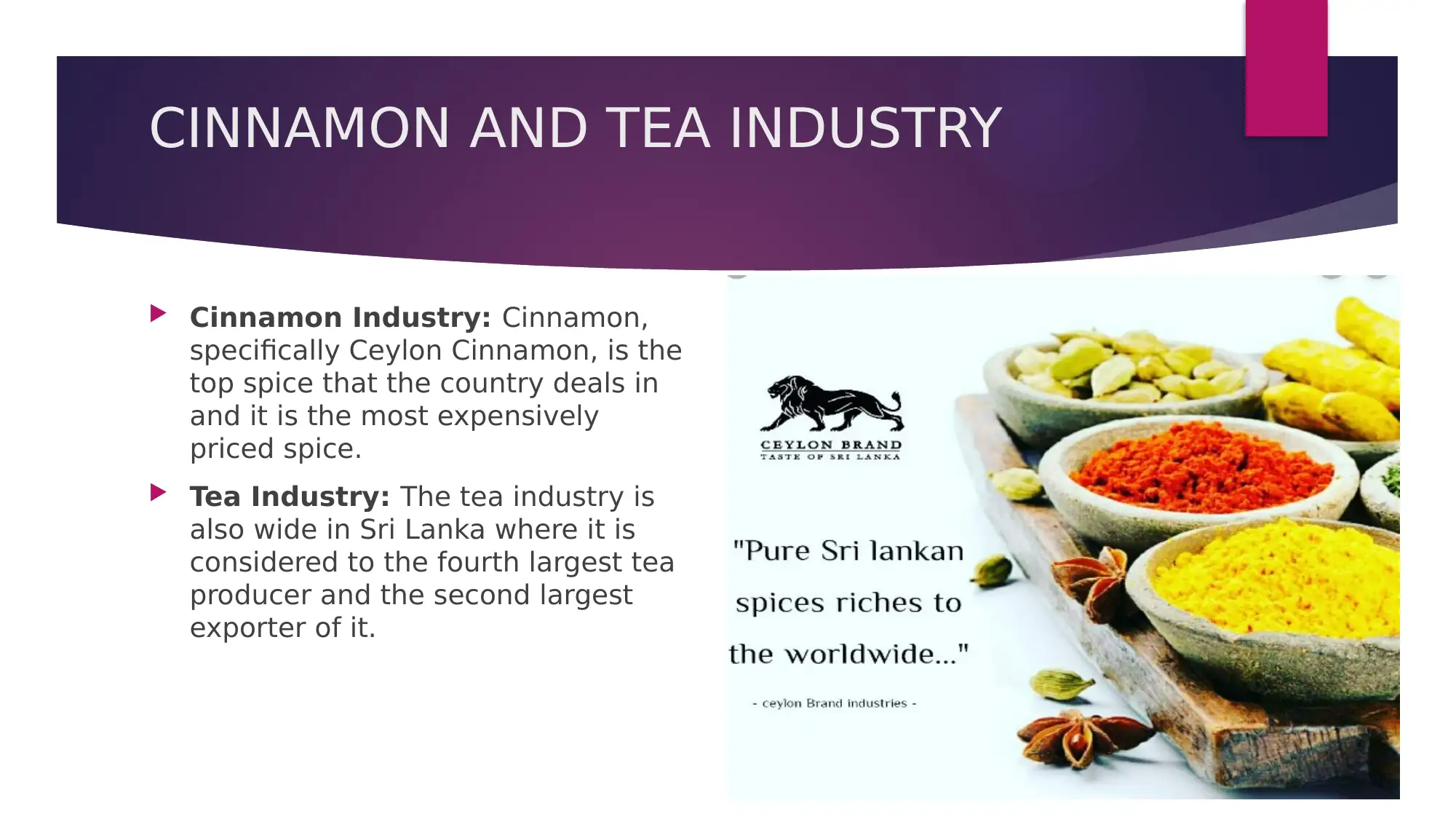
CINNAMON AND TEA INDUSTRY
Cinnamon Industry: Cinnamon,
specifically Ceylon Cinnamon, is the
top spice that the country deals in
and it is the most expensively
priced spice.
Tea Industry: The tea industry is
also wide in Sri Lanka where it is
considered to the fourth largest tea
producer and the second largest
exporter of it.
Cinnamon Industry: Cinnamon,
specifically Ceylon Cinnamon, is the
top spice that the country deals in
and it is the most expensively
priced spice.
Tea Industry: The tea industry is
also wide in Sri Lanka where it is
considered to the fourth largest tea
producer and the second largest
exporter of it.
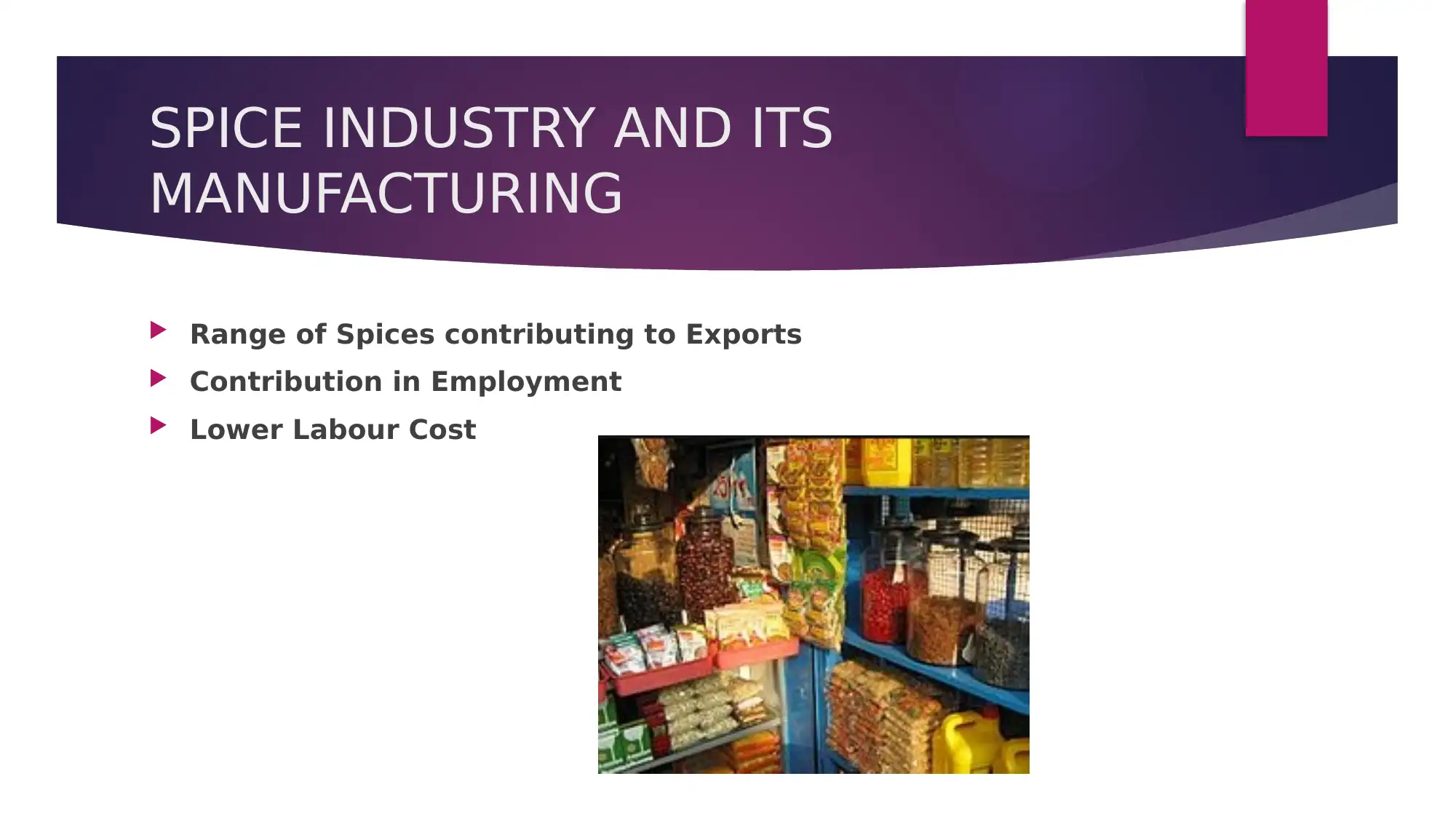
SPICE INDUSTRY AND ITS
MANUFACTURING
Range of Spices contributing to Exports
Contribution in Employment
Lower Labour Cost
MANUFACTURING
Range of Spices contributing to Exports
Contribution in Employment
Lower Labour Cost
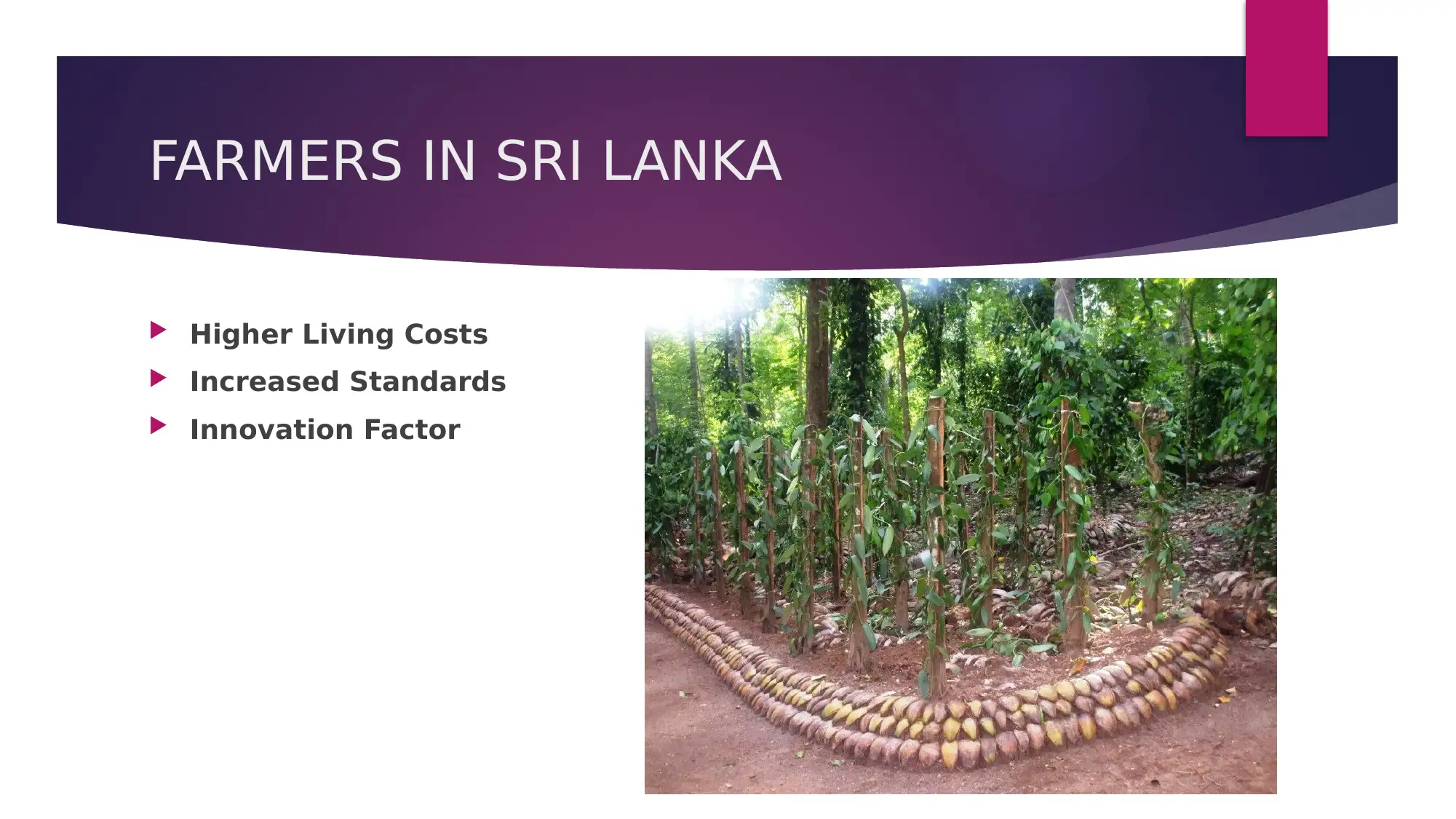
FARMERS IN SRI LANKA
Higher Living Costs
Increased Standards
Innovation Factor
Higher Living Costs
Increased Standards
Innovation Factor
Paraphrase This Document
Need a fresh take? Get an instant paraphrase of this document with our AI Paraphraser

SUPPLY CHAIN IN SPICE INDUSTRY
The supply chain existing between the farmers and
the dealers contributes very minimum value
addition in the trade that takes place.
Dominance Of The Intermediary Dealers
Cumbersome Production Flow
Compromise in Quality
The supply chain existing between the farmers and
the dealers contributes very minimum value
addition in the trade that takes place.
Dominance Of The Intermediary Dealers
Cumbersome Production Flow
Compromise in Quality

SRI LANKAN SPICE COUNCIL
Regulatory Board: The spice Council
of Sri Lanka is a regulatory board in the
spice production of the country where
the council focuses on making the
industry more competitive and
profitable.
Increase the Production: The council
also works towards increasing the
production and supply level of the spices
so that the incoming of the revenue can
enhance
Regulatory Board: The spice Council
of Sri Lanka is a regulatory board in the
spice production of the country where
the council focuses on making the
industry more competitive and
profitable.
Increase the Production: The council
also works towards increasing the
production and supply level of the spices
so that the incoming of the revenue can
enhance
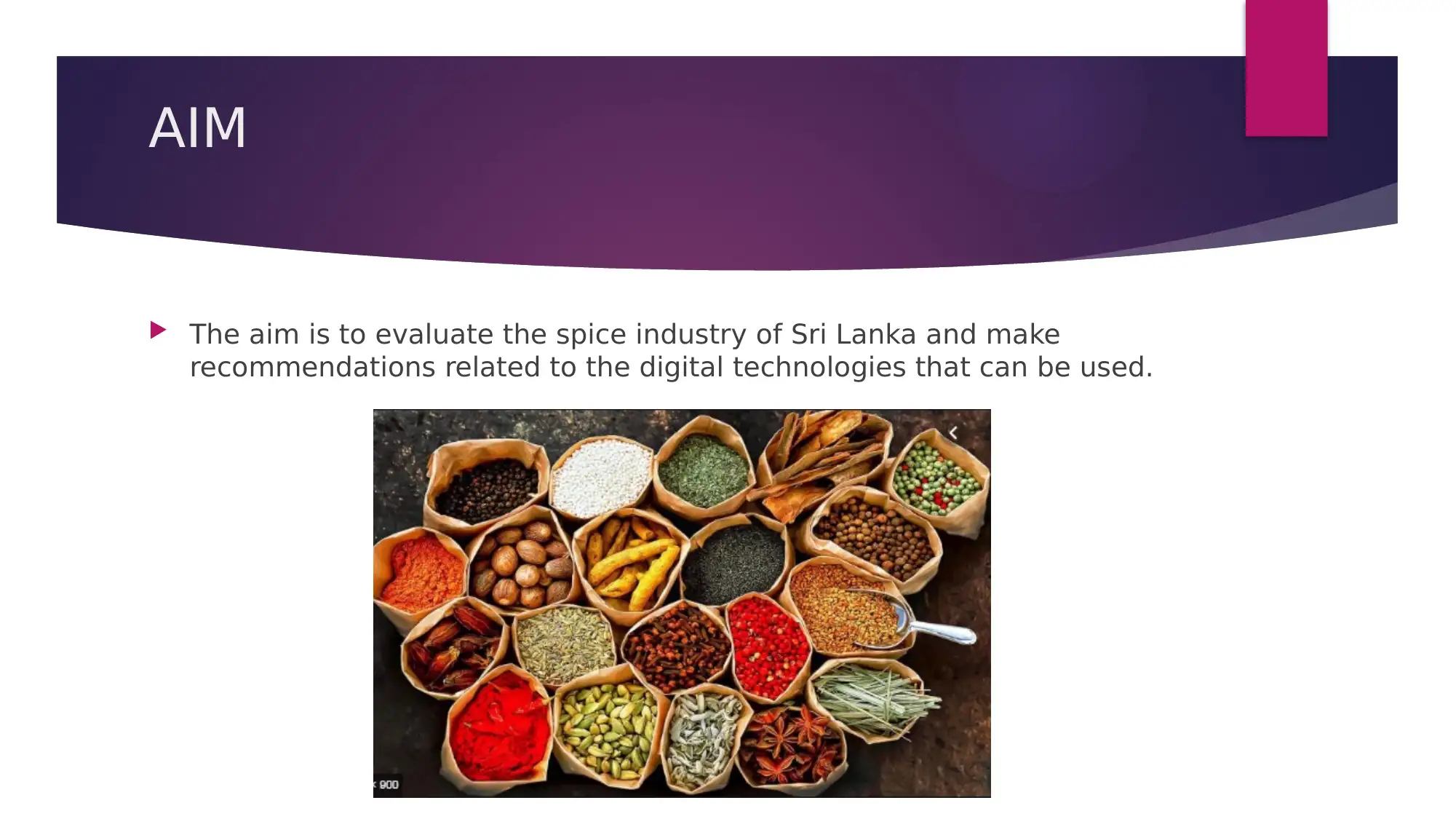
AIM
The aim is to evaluate the spice industry of Sri Lanka and make
recommendations related to the digital technologies that can be used.
The aim is to evaluate the spice industry of Sri Lanka and make
recommendations related to the digital technologies that can be used.
Secure Best Marks with AI Grader
Need help grading? Try our AI Grader for instant feedback on your assignments.
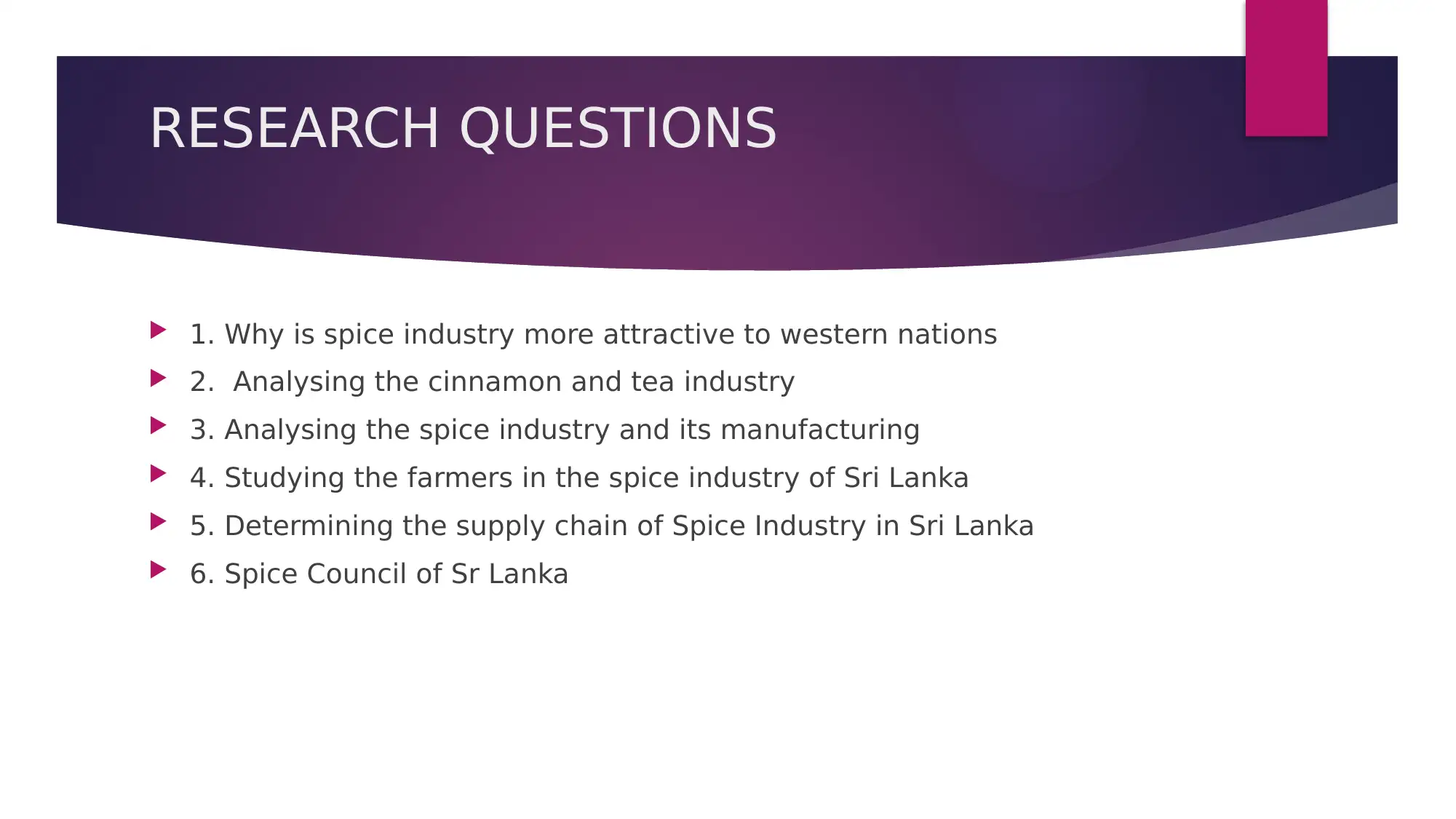
RESEARCH QUESTIONS
1. Why is spice industry more attractive to western nations
2. Analysing the cinnamon and tea industry
3. Analysing the spice industry and its manufacturing
4. Studying the farmers in the spice industry of Sri Lanka
5. Determining the supply chain of Spice Industry in Sri Lanka
6. Spice Council of Sr Lanka
1. Why is spice industry more attractive to western nations
2. Analysing the cinnamon and tea industry
3. Analysing the spice industry and its manufacturing
4. Studying the farmers in the spice industry of Sri Lanka
5. Determining the supply chain of Spice Industry in Sri Lanka
6. Spice Council of Sr Lanka
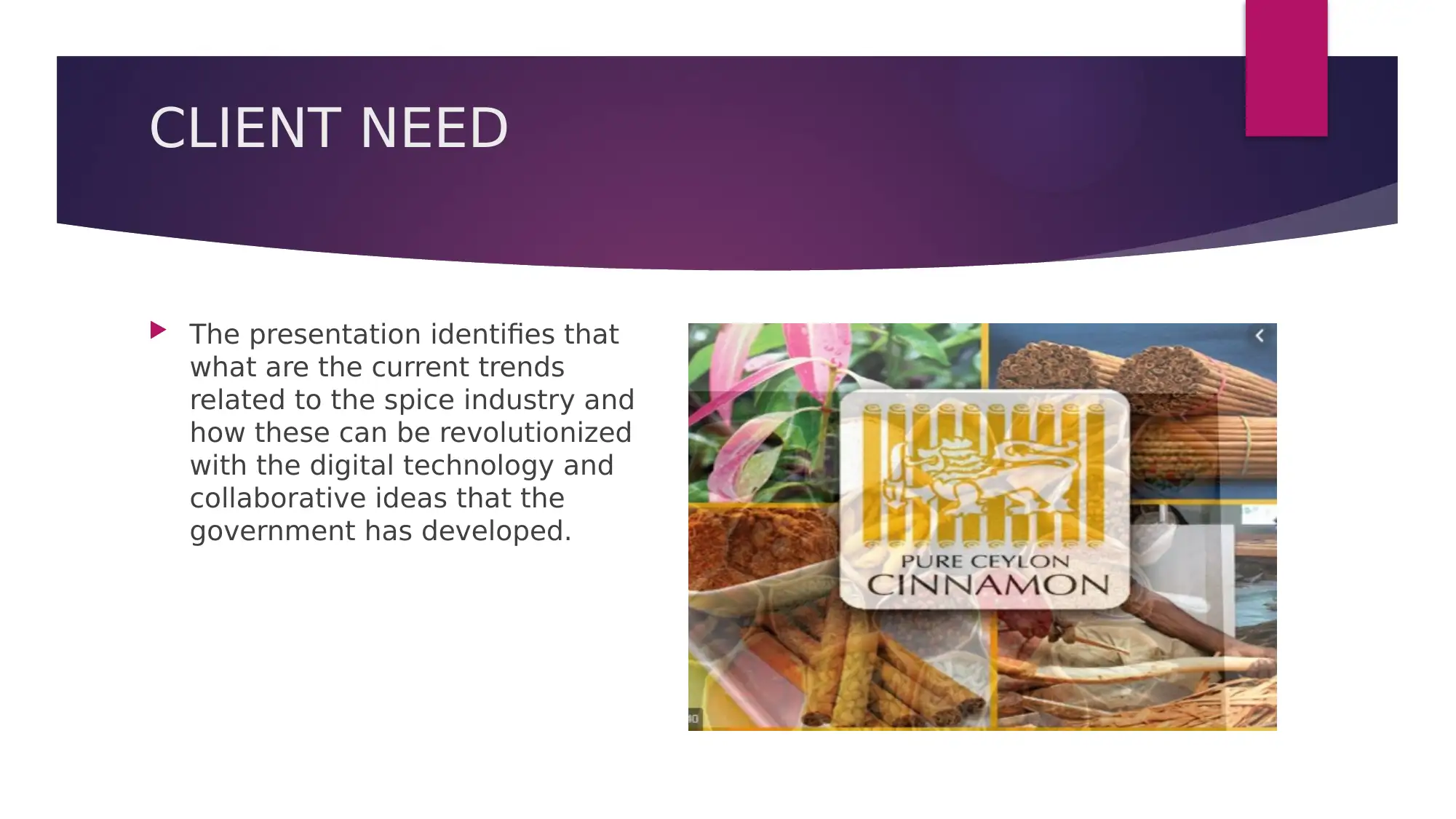
CLIENT NEED
The presentation identifies that
what are the current trends
related to the spice industry and
how these can be revolutionized
with the digital technology and
collaborative ideas that the
government has developed.
The presentation identifies that
what are the current trends
related to the spice industry and
how these can be revolutionized
with the digital technology and
collaborative ideas that the
government has developed.
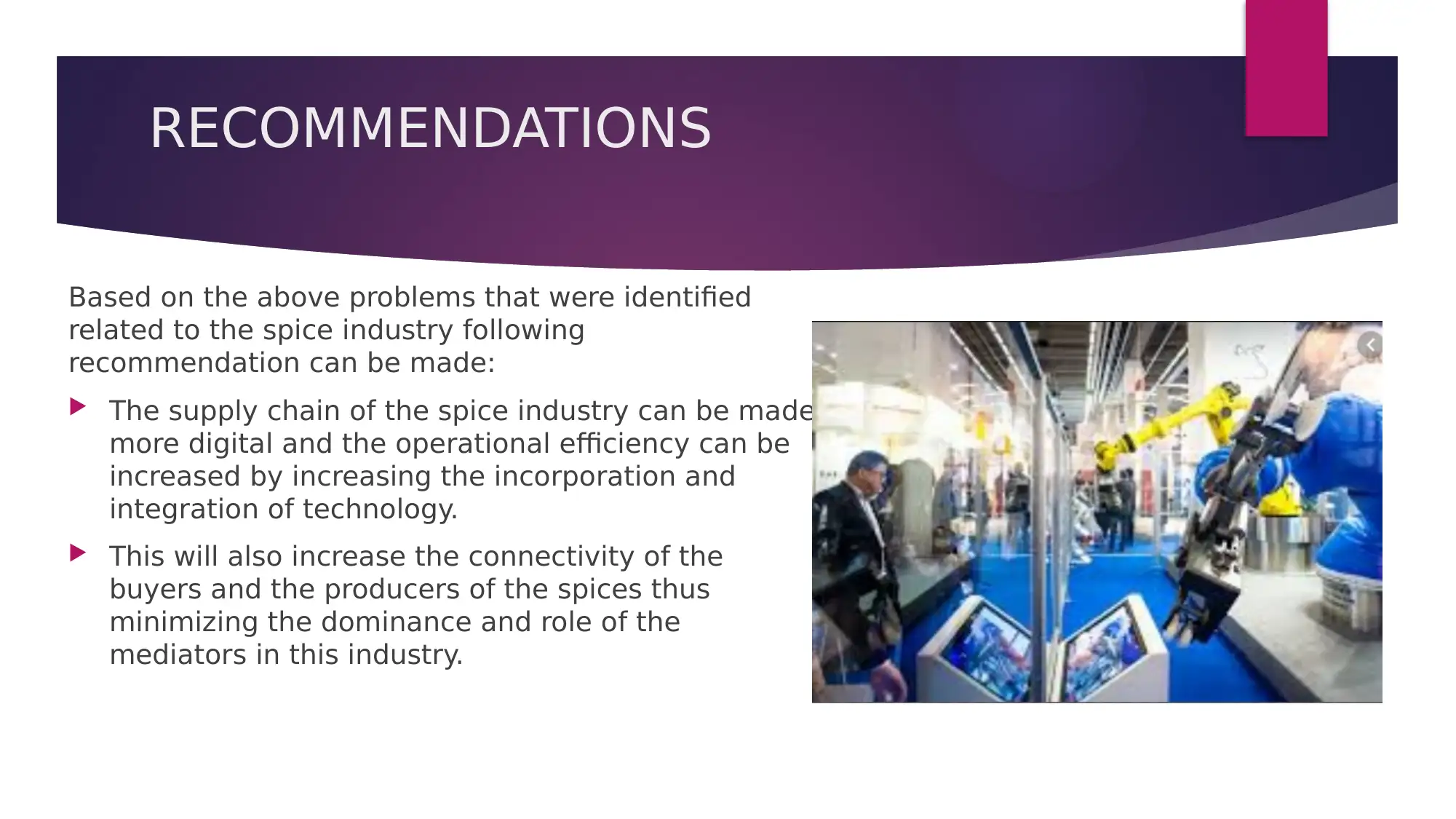
RECOMMENDATIONS
Based on the above problems that were identified
related to the spice industry following
recommendation can be made:
The supply chain of the spice industry can be made
more digital and the operational efficiency can be
increased by increasing the incorporation and
integration of technology.
This will also increase the connectivity of the
buyers and the producers of the spices thus
minimizing the dominance and role of the
mediators in this industry.
Based on the above problems that were identified
related to the spice industry following
recommendation can be made:
The supply chain of the spice industry can be made
more digital and the operational efficiency can be
increased by increasing the incorporation and
integration of technology.
This will also increase the connectivity of the
buyers and the producers of the spices thus
minimizing the dominance and role of the
mediators in this industry.
Paraphrase This Document
Need a fresh take? Get an instant paraphrase of this document with our AI Paraphraser
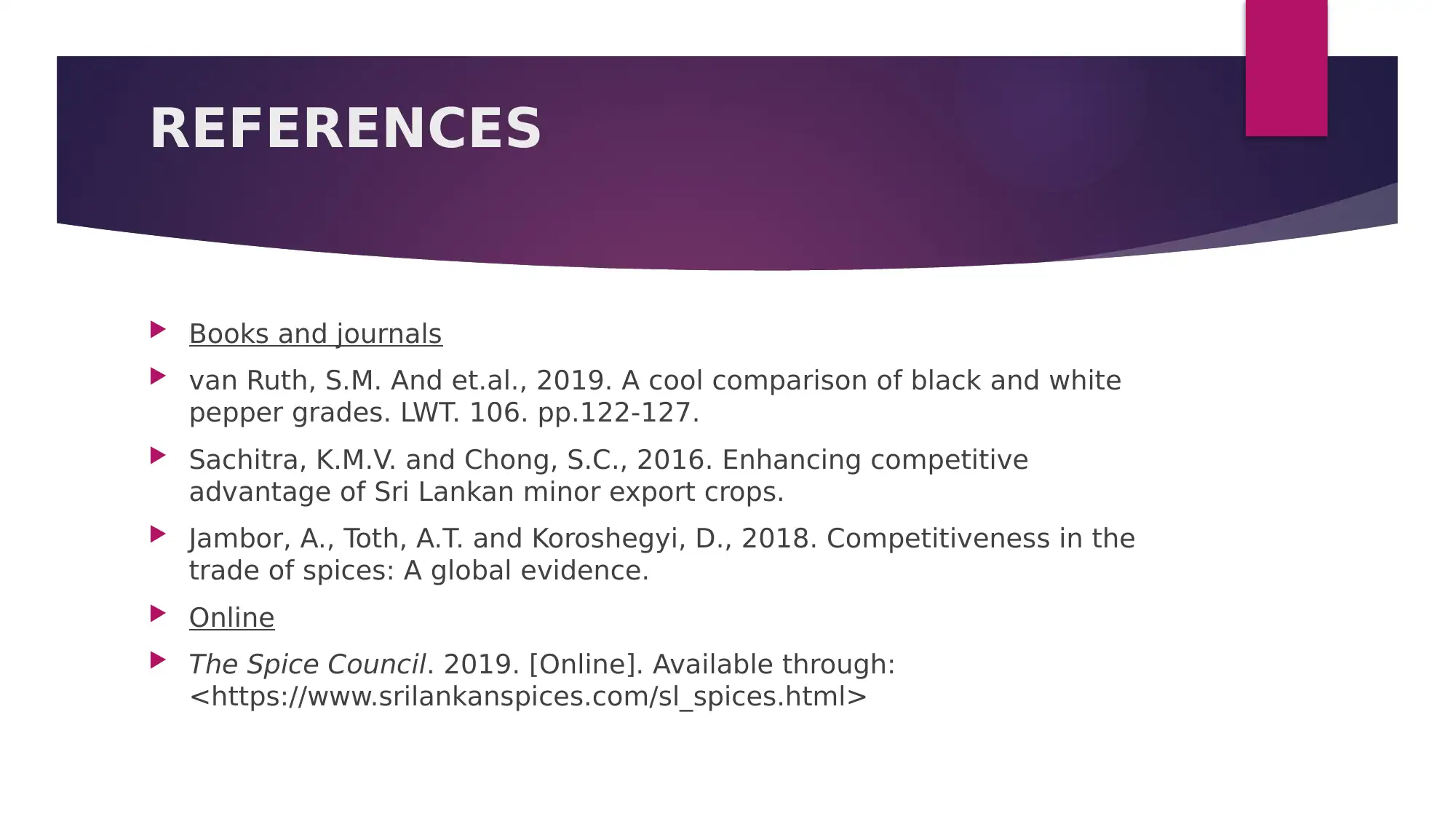
REFERENCES
Books and journals
van Ruth, S.M. And et.al., 2019. A cool comparison of black and white
pepper grades. LWT. 106. pp.122-127.
Sachitra, K.M.V. and Chong, S.C., 2016. Enhancing competitive
advantage of Sri Lankan minor export crops.
Jambor, A., Toth, A.T. and Koroshegyi, D., 2018. Competitiveness in the
trade of spices: A global evidence.
Online
The Spice Council. 2019. [Online]. Available through:
<https://www.srilankanspices.com/sl_spices.html>
Books and journals
van Ruth, S.M. And et.al., 2019. A cool comparison of black and white
pepper grades. LWT. 106. pp.122-127.
Sachitra, K.M.V. and Chong, S.C., 2016. Enhancing competitive
advantage of Sri Lankan minor export crops.
Jambor, A., Toth, A.T. and Koroshegyi, D., 2018. Competitiveness in the
trade of spices: A global evidence.
Online
The Spice Council. 2019. [Online]. Available through:
<https://www.srilankanspices.com/sl_spices.html>
1 out of 14
Related Documents
Your All-in-One AI-Powered Toolkit for Academic Success.
+13062052269
info@desklib.com
Available 24*7 on WhatsApp / Email
![[object Object]](/_next/static/media/star-bottom.7253800d.svg)
Unlock your academic potential
© 2024 | Zucol Services PVT LTD | All rights reserved.
